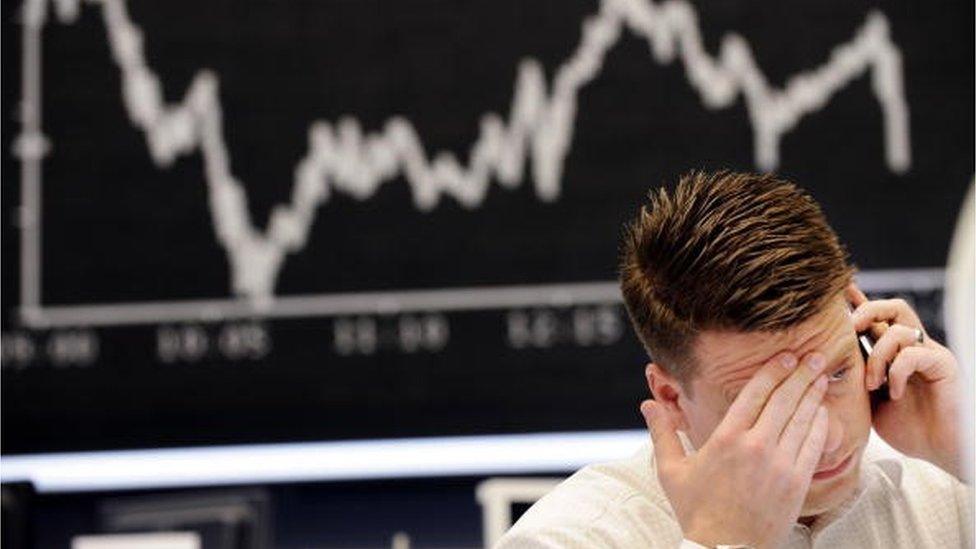Markets are in turmoil - here's why
- Published
- comments

When in fog, tread carefully - particularly if you are not sure where the cliff edge is.
Another morning and another day of trading screens showing a sea of red.
As I write this the FTSE 100 is down 2.6%, the Hang Seng in Hong Kong is down 3.9% and the German Dax is down 3.1%.
Of the 21 major global stock markets, 19 are down on the same period last year.
The great sell off continues.
Why?
It's a mix - part economic fundamentals, part market emotion as herding investors follow each other down a negative spiral, fearful of being left beached as the tide goes out, and part brute market forces, the major trading houses looking to make a profitable turn on share prices which they bet are not going up any time soon.
First, let's look at the economic fundamentals.
The engines of growth
There are three major economic blocks that markets watch for signs of turbulence - the engines of global growth.
They are America, China and the European Union, or more specifically the eurozone group of economies.
Each of these vital engines has some worrying rattles.
On Wednesday, Janet Yellen, the chairwoman of the Federal Reserve, America's central bank, said that the global economy was "less supportive" of US growth.
The American economy itself is in relatively robust health.
But Ms Yellen's warning has added to the general feeling that 2016 will be a year dominated by market bears - the march of the sellers not the buyers.
In China, economic concerns have been spiced by increasing market and currency volatility.
As the Chinese markets plunged, the central authorities first intervened.
And then withdrew.
This was overlaid by currency confusion.
Beijing appeared at first to want the renminbi's value to fall - stoking western business fears of a flood of cheaper Chinese exports - and then spent billions of dollars of its own admittedly capacious foreign reserves shoring it up.
Finally the eurozone, a group of countries not totally out of the financial crisis sick ward.
Industrial production in the three major economies - Germany, Italy and France - is down.
Unknown territory
The European Central Bank governor, Mario Draghi, has introduced negative interest rates in an attempt to encourage businesses and banks to invest rather than store money away.
But, as the Japanese central bank has found, the introduction of negative interest rates raises the question - what are central bankers so worried about they are writing new chapters of the Alice in Wonderland economic playbook many believe the world is now following.
First, trillions of pounds of monetary stimulus. Now, negative interest rates. Can central banks really be relied on support the global economy for the foreseeable future?
The markets are experiencing a major correction.
After the 2012 eurozone crisis - when markets fell into a doom loop of concern that the whole European project could break apart - exuberance returned when the nightmare failed to materialise.
Stock prices soared as central bank repair money washed through the system.
That exuberance is now being unwound, fed by souring global economic news.
Investors started worrying.
Were asset price rises based on fundamentals - that is, the performance of the business or sector being invested in - or were they being pumped up by quantitative easing, central banks printing money?
And if there was a bubble growing, do I, as an investor with billions of pounds of assets under management, need to call the top of the market and get out early to protect my position?
So, the sell started.
Add into this toxic mix the commodity price drop as global demand slowed faster than supply could be cut.
And the problem of bank stocks - caught in a low interest rate, high regulation world where profits are harder to come by.
And the reasons for the storm of selling becomes clearer.